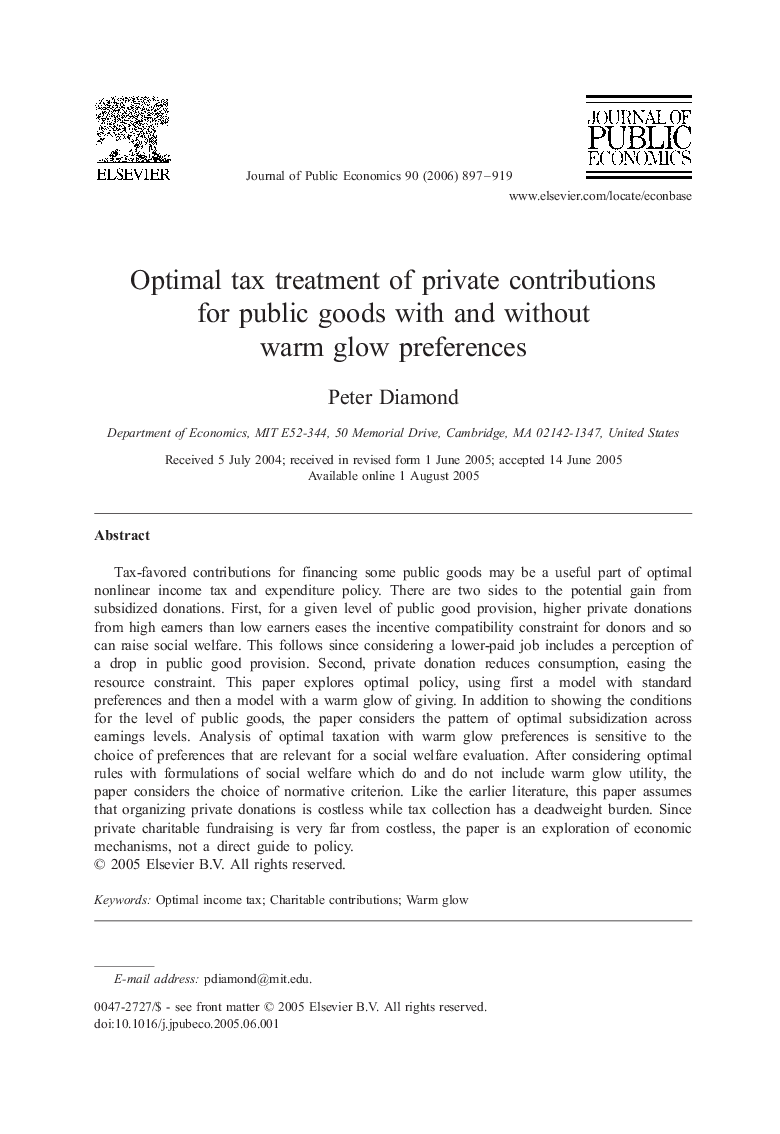| Article ID | Journal | Published Year | Pages | File Type |
|---|---|---|---|---|
| 969593 | Journal of Public Economics | 2006 | 23 Pages |
Tax-favored contributions for financing some public goods may be a useful part of optimal nonlinear income tax and expenditure policy. There are two sides to the potential gain from subsidized donations. First, for a given level of public good provision, higher private donations from high earners than low earners eases the incentive compatibility constraint for donors and so can raise social welfare. This follows since considering a lower-paid job includes a perception of a drop in public good provision. Second, private donation reduces consumption, easing the resource constraint. This paper explores optimal policy, using first a model with standard preferences and then a model with a warm glow of giving. In addition to showing the conditions for the level of public goods, the paper considers the pattern of optimal subsidization across earnings levels. Analysis of optimal taxation with warm glow preferences is sensitive to the choice of preferences that are relevant for a social welfare evaluation. After considering optimal rules with formulations of social welfare which do and do not include warm glow utility, the paper considers the choice of normative criterion. Like the earlier literature, this paper assumes that organizing private donations is costless while tax collection has a deadweight burden. Since private charitable fundraising is very far from costless, the paper is an exploration of economic mechanisms, not a direct guide to policy.
